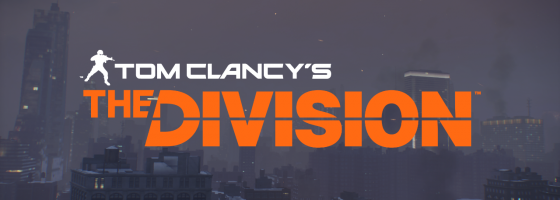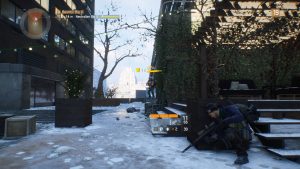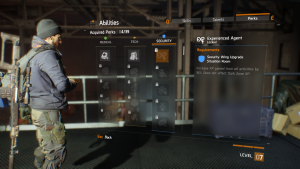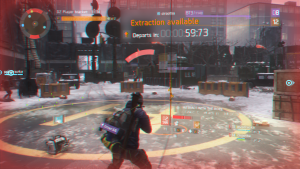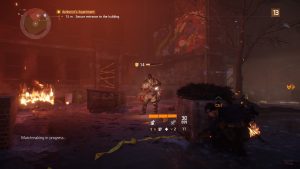Tom Clancy’s the Division was hyped as yet another turn away from the traditional squad-based shooting that the Tom Clancy brand is known for. Taking elements from Borderlands and MMO design, the Division provides a unique mix of genres and mechanics. While it may not hit every point, if you’re looking to fill your Role Playing Shooter fix, this game has you covered.
Black Friday:
Like previous Tom Clancy games, the Division is semi-grounded in the real world. On Black Friday, a terrorist group unleashes a deadly virus that has left New York devastated. With the city locked down and the police unable to keep control, it’s up to a sleeper agent organization called the Division to take back the city and restore order.
First off, I have to say that the game looks amazing. Despite not being a horror game, the Division has a very creepy feel as you wander the desolate streets of New York. A lot about what’s going on can be seen simply through the destruction and mayhem on the streets.
Once you start playing, you’ll find that the Division is a melting pot of mechanics and genres.
MMORPS:
The Division at its basic level could be described as Borderlands by way of Tom Clancy mixed with an MMO. The game is played as your typical third person cover shooter as you wander around New York. Killing enemies and completing tasks will let you level up and unlock new abilities and means of customizing your agent over time.
Just like Borderlands, expect to find a variety of guns broken down by type, rarity, and level. Combat is all about using cover and your weapons to take on enemies in far greater number than you.
As the game goes on, you’ll find missions in the form of set pieces that you and a group can take on.
Outside of safe houses, the game is instanced to you and your group with exception to the Dark Zone (which we’ll come back to). The progression model is quite different from MMOs, and feels more at home in a single player game.
Once you take back your base of operations, you’ll be able to upgrade three different wings: Medical, Security and Tech. Each wing corresponds to a different skill tree and requires different resources to improve. Completing select missions will reward you with experience in one of the three areas.
Besides gear, you’ll improve and customize your character using skills, talents and perks. Skills are special abilities tied to the three different tracks. You can only equip two of them at a time (and one ultimate power) and they are akin to special powers in MMOs.
Talents are passive bonuses that you can have active on your character. These bonuses are designed to further specialize yourself depending on how you want to play the game. Finally, perks are additional bonuses that once unlocked remain active and add to your utility.
The Division features a streamlined approach to weapon generation, that ties into the progression model. Each gun type comes with a special passive that is related to its purpose: Assault rifles damage armor more, precision rifles do more head-shot damage and so on. There aren’t classes in the Division; how you choose to specialize your character becomes your pseudo class.
I like the interplay of choosing what guns, skills and talents, which in term creates synergies custom to your build. Trust me, you’ll need them, as there is a lot out to get you; including your fellow agents.
Getting Dark:
The other major marketing point of the Division is the Dark Zone. An area of New York that was hit the hardest by the virus. This area is an open PvP zone as players fight extra strong enemies and look for the highest quality gear in the game. The twist is that all gear found cannot be simply removed and used.
You need to schedule an emergency evac to take the gear for decontamination; signaling players and the enemy to come and try to take your stuff. Players will have to work together with the constant fear of being betrayed to get the loot and get out alive. You have a separate Dark Zone level that dictates what loot containers you can open and is another form of progression. Your Dark Zone level also determines what dark zone found gear you can equip.
If you are killed, all your DZ loot will drop to the ground for anyone to come take it. Part of the fun/challenge of the DZ is dealing with the other players. If you attack another player in the DZ who is not attacking you, you will become rogue. Going rogue is the Division’s version of PvP and sets you up to hunt the other players.
Dying while rogue will cost you more DZ experience, but you get the benefit of being able to hunt your fellow players.
All in all, the Division hits a lot of good points about shooting, MMO and progression. Unfortunately, while trying to have it all, it does slip up in a few areas.
Role-Playing Realism:
The Division tries to combine the tactical combat of a Tom Clancy game with the progression model and growth of an RPG. The problem is that these two elements don’t fit all that well together and creates some dissonance.
The game wants you to play it tactical by using your special powers and cover to take on the enemies. However, it also wants to have scaling and RPG-styled growth that supersedes your skill.
This is a game where you can shoot someone in the head with a sniper rifle and they’ll not only shrug it off, but will charge you and kill you without much effort. Despite the realistic-looking setting, there isn’t a lot of realism to the Division.
Armor acts as a magic force field protecting every part of an enemy from damage. Enemies of equal level can easily chew through your health even if there’s only one firing on you. Instead of being tactical, the greatest strength of the enemies is their bullet sponge-ness. Nowhere is this seen more than when fighting elite enemies, and watching humans take 10 sniper bullets to the head and still come at you.
The game did not do a good job in my opinion of scaling missions depending on party size. It always seems like I’m outnumbered at least five to one for any set fight. Enemies scale in terms of defense and damage, but not numbers. Even with the 1.4 patch, I still had trouble finding people to group up with for the major missions while leveling up.
There were many times where just having one extra person made a world of difference. Despite being able to play it single player, The Division is at its best with co-op.
The Division doesn’t know what it wants to be. Is this a tactical-based shooter where skill trumps gear? Then there needs to be more options for the player instead of just hunkering down and taking pot shots.
Is this a RPG where there is always varied loot to find and buy? Then we need more variety in terms of gear, customization and weapons.
The developers intentionally have the max level low to get people to the end-game fast. The problem is that it’s still a slog to get to the good stuff.
Grinding Gear:
The Division’s end game with the 1.4 patch is built around the world tier system. Loot at the level cap has different ratings; with the higher the better. You can set the world tier which raises the difficulty and rewards depending on your gear rating. This creates a system that lets Massive extend the game indefinitely if they want.
Unfortunately, other than one new mission (and another locked to DLC), there isn’t anything new in terms of challenge. While the enemies are getting stronger, it’s not changing anything you’ve seen before. The game does introduce gear with set bonuses which is a nice end-game goal to shoot for.

The end-game is designed to keep going with gear rating, but there isn’t anything at the moment to do
The problem is that this kind of progression wears out its welcome fast. The Division just ends at the moment.
You can keep grinding resources and gear to make yourself all powerful, but there’s nothing new to take on at this time.
One thing to keep in mind, the 1.4 patch work did push back the work Massive was doing on content. Now that it’s out, we should expect to see more end game (and season pass) content coming soon.
A New York MMO Minute:
The Division’s unique mix of MMO and shooting puts it in a league of its own. At this point, it’s going to be up to Massive to decide how far they want to take the game from here. The true test of the game’s staying power is going to be how they flesh out the end-game and progression from 1.4.
If your friends are looking for a game that is part shooting and stats, The Division at this point should hold you over until they hopefully continue to grow.
If you enjoyed this post, please consider donating to the Game-Wisdom Patreon campaign. Your donations can help to keep the site going and allow me to produce more great content. Follow me on Twitter @GWBycer, and you can find daily video content on the Game-Wisdom YouTube channel.

